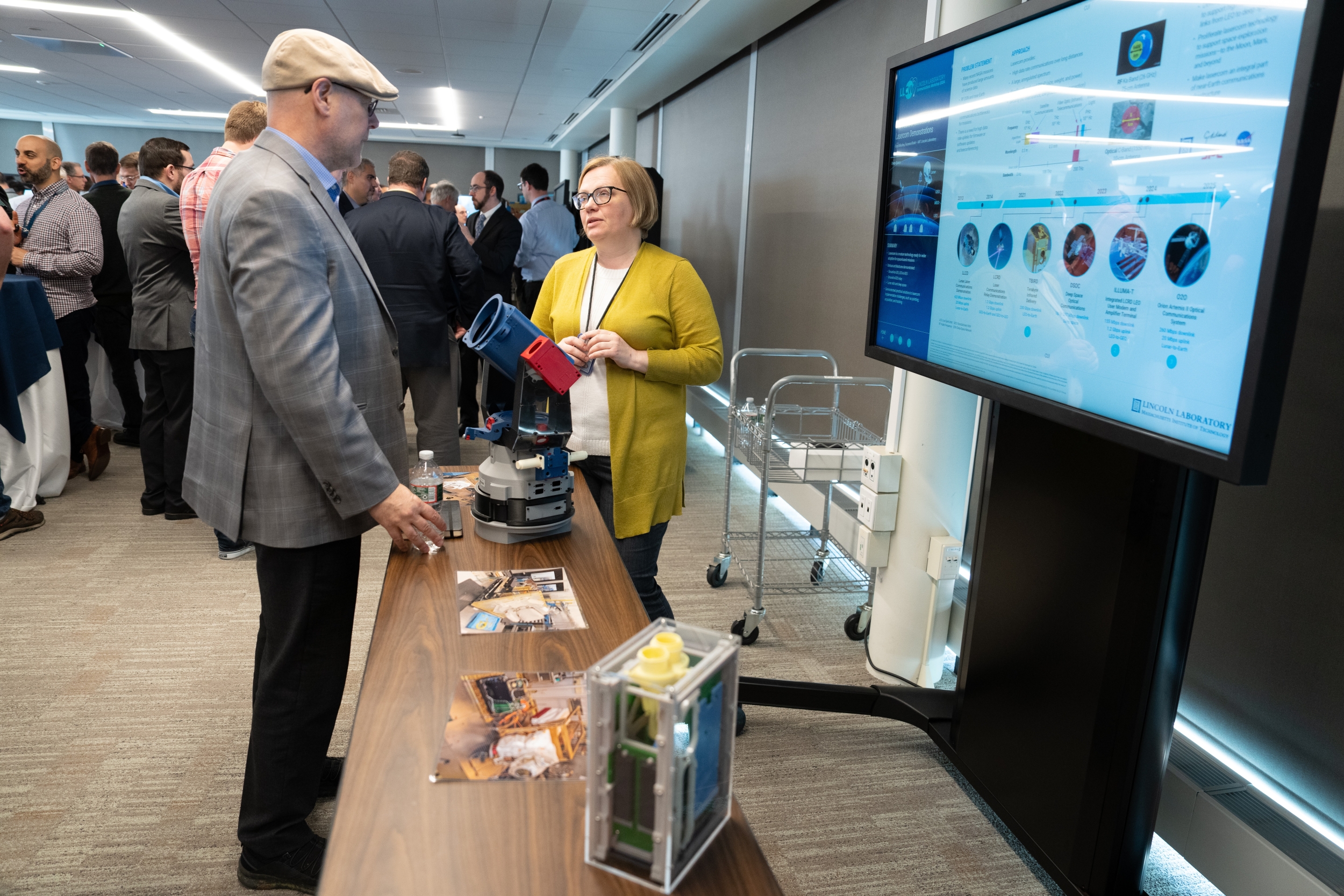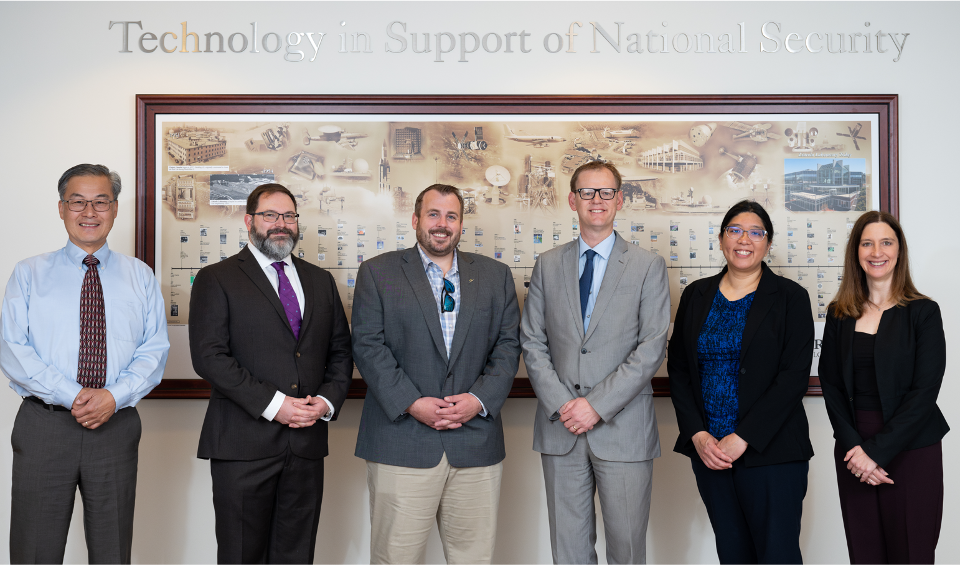Lincoln Laboratory hosts 14th annual Communications Workshop

Each year, Lincoln Laboratory hosts the Lincoln Laboratory Communications Workshop (LLCW). The event brings together Laboratory staff and invited guests from government, industry, academia, federally funded research and development centers, and university-affiliated research centers to discuss the Laboratory's work in the area of advanced communications systems. This year, the 14th annual LLCW was held on May 22–23 in person at the Laboratory and focused on the themes of spectrum operations, satellite communications, advanced network and communications systems, laser communications (lasercom), and quantum and emerging technologies.
The day before the workshop began, attendees had the opportunity to also attend the inaugural Space Warfighting Analysis Center (SWAC) Spectrum Warfare Program Force Design for Industry session.
"As part of LLCW, this year, we hosted the first SWAC Space Data Network Industry Day," said Jade Wang, an assistant leader of the Optical and Quantum Communications Technology Group. "This half-day session that preceded the formal start of the conference saw a broad cross section of industry partners. SWAC used this session to disseminate the architectures being developed as part of their Space Data Network Force Design to the broader communications community."
On May 22, the formal start of LLCW began with opening remarks from workshop chairs Wang and Chayil Timmerman, also an assistant leader of the Optical and Quantum Communications Technology Group, as well as Melissa Choi, then assistant Laboratory director. Following the introduction to the workshop, David Voss, director of the Spectrum Warfare Program at the SWAC in Colorado Springs, Colorado, gave the keynote speech.

"This year's conference covered a number of different technical topics from across the Laboratory," said Wang. "We highlighted the results of a number of recent test events. Following off the Force Design conversations from SWAC, there were a number of talks dedicated to the future of space data networking. Speakers, internal and external, were carefully curated to highlight the superior communications-centric work being conducted across the Laboratory. External speakers were selected to educate the broader community on emerging trends, efforts, and threats that are paramount to reliable secure communications for the warfighter."
The first day consisted of multiple sessions featuring talks from Laboratory employees and external speakers. The opening session, which focused on communications for airborne applications, featured talks on the Laboratory's work on air-to-undersea lasercom, the Lofted ANTenna Emergency Relay Node (LANTERN) program, and enabling technology transfer for a multifunctional system. The second session of the day, which was focused on recent developments in communications in the space sector, featured talks on the Laboratory's space-based adaptive communications node, NASA's Deep Space Optical Communications project, and the ILLUMA-T mission. An interactive poster session concluded the first day of the workshop, allowing Laboratory staff to discuss topics in communications with attendees, individually.
"The new digital format of workshop posters has really evolved over the last few years, and LLCW has always kind of been the guinea pig for this because of our placement in the schedule and unique collaboration with the Laboratory's Technical Communications Group," said Amanda Wait, a graphic artist in the Tactical Networks Group. "For the past five or six years, we have had Communications Systems Division artists assist Technical Communications staff with the layout of these posters, which has been so much fun and a nice break from our usual tasks. The poster session has become very popular, and we always get great feedback from attendees."
The second day of the conference was also divided into two sessions. The first session, titled "Emerging Capabilities in Communications," featured talks on topics such as proliferated low-Earth orbit (pLEO) data transport and the universal coherent optical reconfigurable node (UniCORN) project. The last session of talks, which focused on communications for the battlespace, discussed topics such as the future of space data networking and 5G coexistence.
Overall, the workshop chairs believed that the conference was a success.
"LLCW 2024 was widely successful this year because of the concerted effort of the large team of people across the groups, divisions, and departments of the Laboratory," said Wang. "They ensured we had an engaging, well-run conference that benefits the broader community. We look forward to LLCW 2025 and capitalizing on this year's successes going forward."